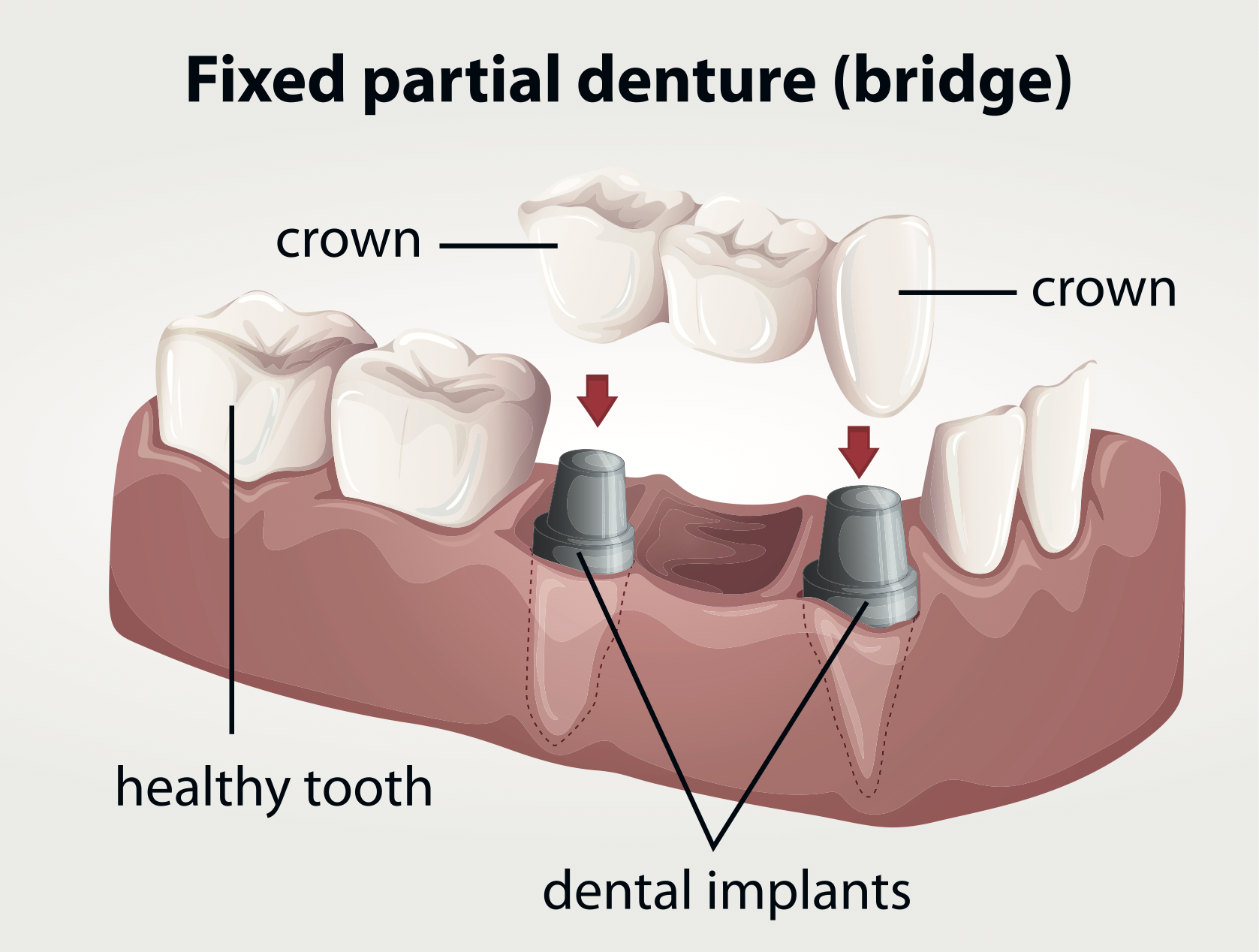This comprehensive guide provides everything you need to know about pontic teeth and dental bridges, empowering you to make informed decisions about restoring your smile.
Understanding Pontic Teeth and Dental Bridges
Lost a tooth and wondering about your options? A dental bridge, featuring a crucial component called a pontic tooth, might be the solution. The pontic tooth is the artificial tooth that fills the gap left by your missing natural tooth. It’s like a puzzle piece, completing your smile and restoring your ability to chew. Let’s explore this essential element of restorative dentistry.
What is a Pontic Tooth?
A pontic tooth is an artificial tooth that replaces a missing natural tooth. It’s a key part of a dental bridge, a fixed prosthetic appliance. The pontic isn’t a standalone solution; it’s anchored to adjacent teeth, called abutment teeth, which support the entire bridge structure. This “bridge” spans the gap, restoring both the aesthetics and functionality of your smile. Pontics are typically crafted from materials like porcelain or metal, with porcelain offering a natural appearance and metal providing underlying strength.
How Dental Bridges Work
A dental bridge is like a small suspension bridge in your mouth. The pontic tooth acts as the roadway, supported by the abutment teeth on either side, which act as anchors. These abutment teeth are often prepared and fitted with crowns to provide a stable base for the pontic. The bridge is cemented onto the abutment teeth, ensuring a secure and stable fit.
Types of Dental Bridges
Just as there are different types of bridges for crossing rivers, there are various types of dental bridges to suit different situations:
- Traditional Bridge: The most common type, using natural teeth on either side of the gap as abutments.
- Cantilever Bridge: Employed when only one adjacent tooth is available for support.
- Maryland Bridge: A less invasive option using a metal or porcelain framework bonded to the backs of the adjacent teeth to hold the pontic.
- Implant-Supported Bridge: A highly stable and long-lasting solution using dental implants as abutments instead of natural teeth.
Choosing the Right Pontic Tooth
Just like natural teeth, pontic teeth come in different shapes and sizes. The best type for you depends on the location of the missing tooth, aesthetics, and ease of cleaning. Your dentist will guide you through the selection process.
Types of Pontic Teeth
- Ridge Lap: Rests directly on the gum ridge, offering a natural look but can be slightly more challenging to clean.
- Ovate: Shaped like an egg, minimizing contact with the gums for easier cleaning but potentially sacrificing some natural appearance.
- Modified Ridge Lap: Combines the aesthetics of a ridge lap with the hygiene benefits of an ovate pontic.
- Sanitary/Hygienic: Doesn’t touch the gums at all, making it the easiest to clean but often less aesthetically pleasing, typically used for back teeth.
Materials for Pontic Teeth
Pontic teeth, like other parts of a dental bridge, are made from various materials, each with its pros and cons:
| Material | Pros | Cons |
|---|---|---|
| Porcelain | Natural-looking, stain-resistant | Can be brittle |
| Ceramic | Strong, durable, natural-looking | Can be more expensive |
| Metal Alloys | Very strong, durable | Less aesthetically pleasing |
| Porcelain-Fused-to-Metal (PFM) | Combines strength of metal with aesthetics of porcelain | Metal can sometimes show through |
| Zirconia | Incredibly strong, durable, biocompatible | Can be more expensive than PFM |
The Dental Bridge Procedure
Getting a dental bridge involves several steps:
- Abutment Preparation: The abutment teeth are reshaped to accommodate the crowns that will support the pontic.
- Impressions: Impressions of your teeth are taken to create a custom-fit bridge.
- Temporary Bridge: A temporary bridge is placed while your permanent bridge is being fabricated.
- Permanent Bridge Placement: The permanent bridge is fitted and adjusted for optimal comfort and function.
Benefits of Dental Bridges
Dental bridges offer several advantages:
- Restored Chewing Ability: Enjoy meals without difficulty.
- Improved Speech: Speak clearly and confidently.
- Maintained Facial Structure: Prevents sagging facial muscles.
- Enhanced Smile Aesthetics: Restores a complete and confident smile.
- Prevents Teeth Shifting: Keeps remaining teeth in their proper positions.
Cost of a Dental Bridge
The cost of a dental bridge varies based on factors like the type of bridge, materials, complexity, and location. Dental insurance may cover a portion of the cost. A single pontic might cost around $643.82 out-of-pocket, assuming 50% insurance coverage. However, it’s essential to consult your dentist and insurance provider for a personalized estimate.
Caring for Your Dental Bridge
Proper care is crucial for the longevity of your bridge:
- Brush and Floss Regularly: Pay special attention to cleaning around the bridge and under the pontic. Interdental brushes and water flossers can be helpful tools.
- Regular Dental Checkups: Professional cleanings and examinations are vital for identifying and addressing potential issues early.
- Avoid Hard Foods: Protect your bridge by avoiding chewing on hard objects like ice or hard candies.
- Address Grinding/Clenching: If you grind or clench your teeth, a nightguard can protect your bridge from excessive wear.
Alternatives to Dental Bridges
While bridges are a common solution, other options exist:
- Dental Implants: A more permanent solution surgically implanted into the jawbone. While typically more expensive and invasive than bridges, implants offer excellent stability and longevity. If you are experiencing pain while chewing, you must be having a molar implants issue. Get the details here on how to solve the problem.
- Partial Dentures: Removable appliances replacing multiple missing teeth. Generally less expensive than bridges or implants, but may not feel as secure.
Potential Complications
While generally safe, potential complications can occur:
- Bridge Failure: Although rare, bridges can fail due to factors like poor oral hygiene or trauma.
- Abutment Tooth Decay: Decay in the supporting abutment teeth can compromise the stability of the bridge.
- Gum Disease: Maintaining good gum health is essential for the long-term success of a dental bridge.
How Long Does a Pontic Last?
The lifespan of a pontic, as part of a bridge, typically ranges from 5 to 15 years, with studies suggesting an 84% survival rate after a decade. Several factors influence a pontic’s longevity:
- Oral Hygiene: Diligent brushing and flossing are essential.
- Bridge Size: Shorter bridges generally last longer.
- Materials: Durable materials like zirconia contribute to longevity.
- Biting Forces: Excessive grinding or clenching can shorten lifespan.
- Regular Check-ups: Professional maintenance is key.
Conclusion
This guide offers general information about pontic teeth and dental bridges. Your dentist is your best resource for personalized advice. Remember, a healthy, beautiful smile is within reach! Do you suffer from breasts having excessive skin and volume? Worry no more! Pendulous breasts correction will provide you with beautiful and youthful breasts. Don’t hesitate to discuss your options and ask questions.
- How Glass Bento Box Containers Make Meal Prep Easier - December 18, 2025
- Why Glass Boxes for Lunch Are Trending for Meal Prep - December 17, 2025
- Bento Box Glass Offers Practical, Eco-Friendly Meal Storage - December 16, 2025










